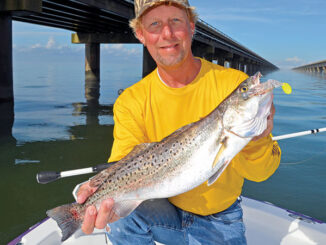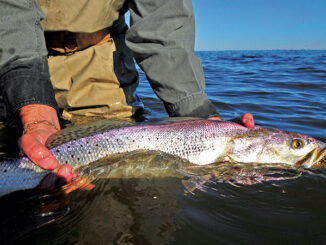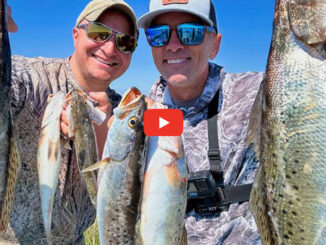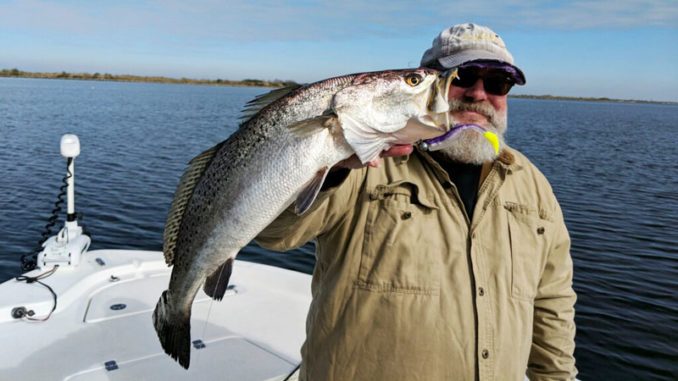
Plenty of speckled trout get in the big channel on their way to the Gulf as the water warms this month. Not enough fishermen follow them, but one veteran guide lays out the blueprint for success once they do.
March Madness, the NCAA’s 68-team college basketball championship tournament, is about set to rev up again. Buzzer-beaters, shocking blowouts and bracket-busting upsets are a staple of the event, which culminates with the Final Four in Minneapolis early in April.
A whole different kind of madness that will take place at the same time is speckled trout fishing across Louisiana’s coast. The calendar icon usually associated with March shows a howling wind or a flying kite, and the unpredictability of the end of winter and the start of spring in the Deep South makes it a tough time to consistently target yellowmouths.
Will the transition of fish out of Louisiana’s coastal marshes begin early? Will late cold fronts push through and cause trout to hang tight before heading out en masse in April? Or will spring floods swell in the Mississippi River, delivering an inundation of freshwater to areas like Delacroix?
Who knows?
But Capt. Charlie Thomason with Bayou Charters in St. Bernard said sections of the Mississippi River Gulf Outlet — the 76-mile channel constructed by the U.S. Army Corps of Engineers in the 1960s to provide ships with a shorter route to the Gulf of Mexico from the Port of New Orleans — is a target-rich opportunity for maddening March specks.
“It’s a staging month, so the fish don’t really feed too much because the water temperature is still pretty cool,” said Thomason, who said typical readings should be in the mid-50s, maybe approaching 60 degrees if there’s a longer warm spell. “But what they do is start staging, suspending in that deeper water. And that’s when the MRGO is one of the most-untouched fisheries around, including by me.
“There’s tons of fish in there because it’s a deepwater channel, but nobody really fishes it correctly.”
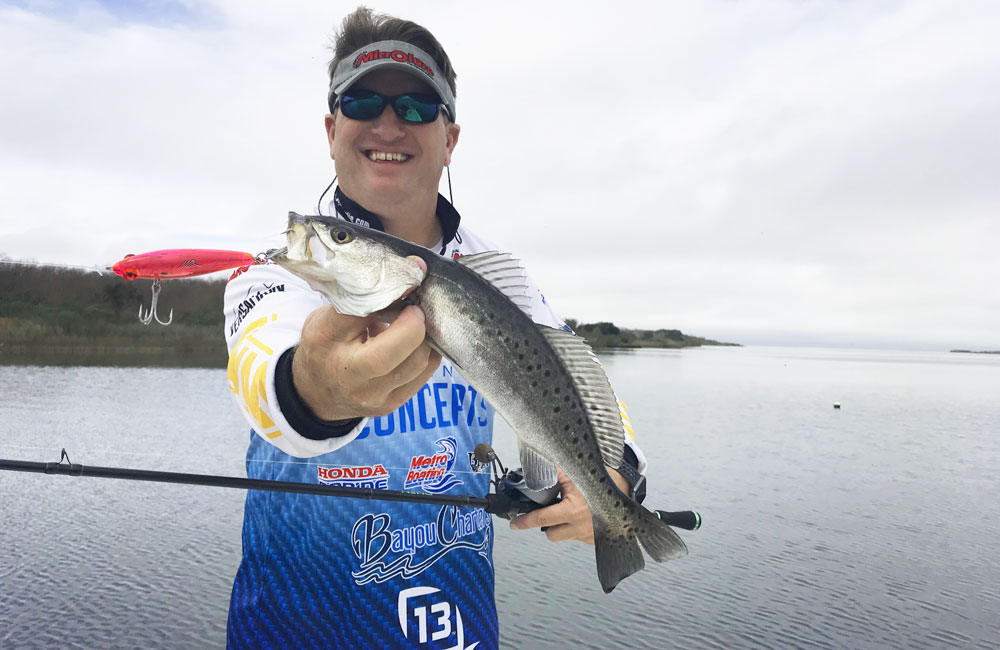
Thomason said he focuses his efforts from the Violet Canal to Shell Beach. Most places in that area range from 15 to 25 feet deep, around 30 feet at the deepest, he said.
“A warming trend typically happens in March, and the fish start making their migration out to the outer fringes of the Biloxi Marsh, like the Lake of Two Trees area, and they’ll start filtering out there,” he said. “March is kind of that staging time, where they don’t make the true move out yet, because they know some cold fronts could still come through, so they stay in the channel and move around in there feeding because that’s where all the bait and shrimp are.
“March is kind of when things get going, but April is when it really starts happening. That’s what makes this such a tough month.”
If you’re dead set on chasing down some March trout, Thomason had three tips to keep in mind if you decide to target the MRGO.
1. Pick your days
This isn’t particularly a trip for the faint of heart. If you don’t like fishing in cool, windy, cloudy conditions, you might want to hang on and wait until April arrives.
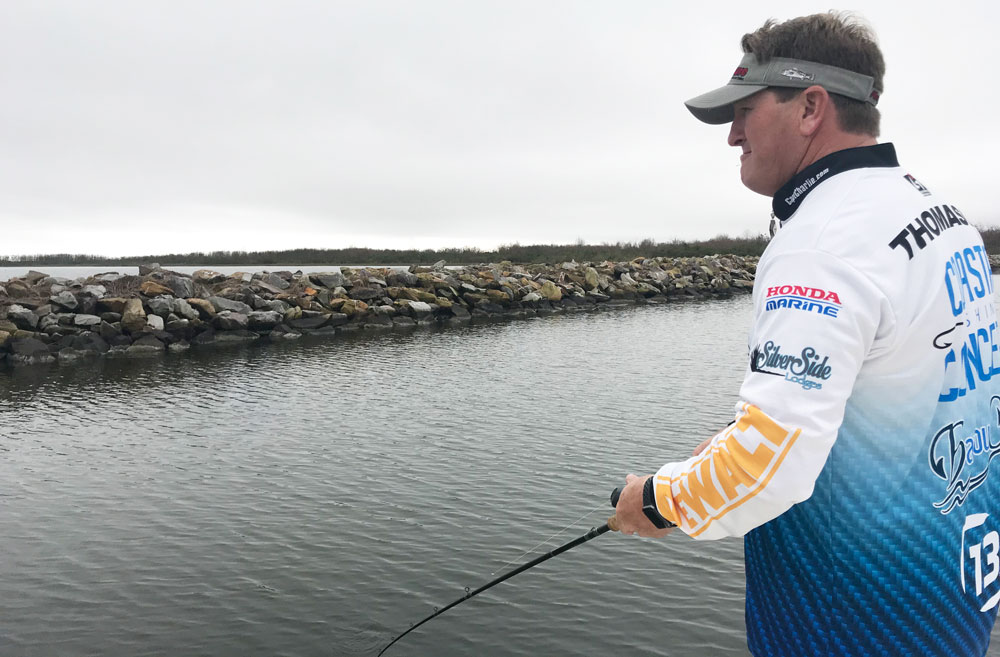
“You have to try to go out and fish when it’s not a bluebird sky day,” he said. “You want it to be overcast, with maybe a front approaching or a front just passed, where it’s still overcast and misty or rainy. That’s the conditions that will be best to fish in there.
“When you have high pressure and really pretty days, 90 percent of the time it’s going to be slick calm, and you’re not going to have a lot of tide movement — that makes the fishing extremely tough. The prettier the day, that’s when you should stay home and spend time with your family. When it’s rainy and windy and kind of dreary, that’s when you want to be fishing.”
And Thomason said if the water temperature isn’t at least 50 degrees, move on to Plan B.
“If it’s below 50, go catch some redfish somewhere,” he said. “It’s just not worth the effort most of the time.”
2. Trolling the ledges
A slow-sinking hardbait, like a MirrOlure 52 MR, is Thomason’s first choice when either casting and retrieving or trolling along the channel ledges, which are typically about 80 feet from the shore. He stressed this isn’t a jerkbait deal, with lots of twitching involved.
“Just throw it out and bring it in with a slow retrieve. You can pause it if you want, but most of the time it’s just a slow retrieve in, because at that point, nothing in the water is swimming really fast,” he said. “You’ll be fishing between 13 and 20 feet deep. If you’re trolling, the slower the better. You can use slow idle, or troll real slow on your trolling motor, like 2 mph. Stay right on the ledge — it’s pretty much a slow slope from the shore out to about 80 feet, then it just drops off, like a canyon. If you’re in real clear water, you can see it.”
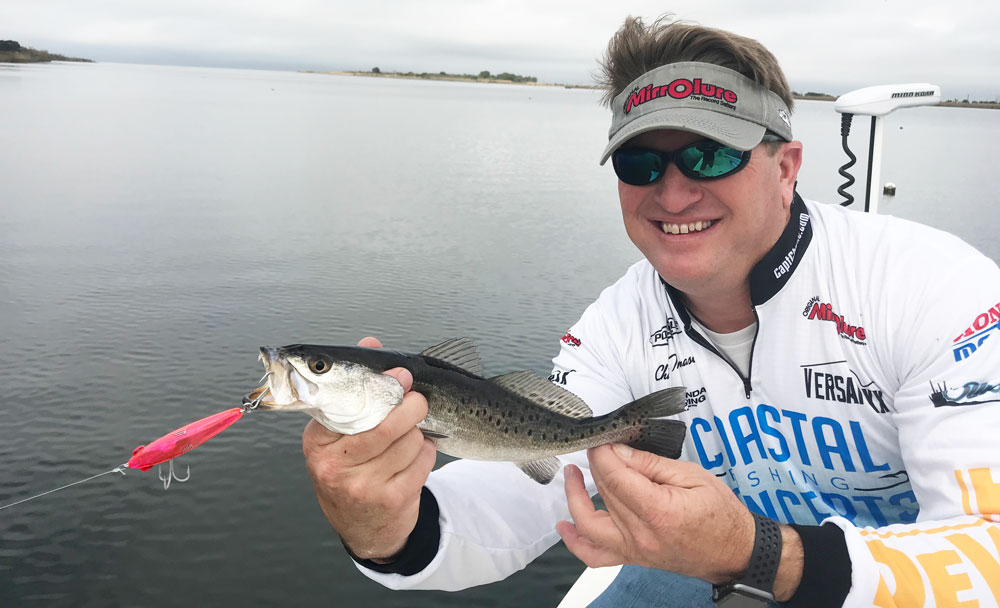
Thomason spools on 20-pound Fins Windtamer braid, which has the diameter of 6-pound mono. He uses a 7- to 8-foot fluorocarbon leader in the 10- to 12-pound range.
“You’ve got to remember, you want to keep the displacement of that line to a minimum when you’re trolling,” he said, noting that your lure should be halfway to two-thirds of the way down, which you can control by your trolling speed. “If you have big, thick line, it won’t sink properly. It’ll just rise up.”
Focus on irregularities along the shoreline to help locate fish as you move over the ledge.
“What I find is that anywhere down the spoil bank the land comes out to a point, normally most of your bites will come wherever that irregularity is on the bank,” he said. “When the bank comes out, it seems like that’s where a current choke happens, and the fish kind of gang up there. And remember, you can do the same thing casting, just trolling down the bank with your trolling motor. A slow retrieve from the shallows coming out is what you need.
“But you want to be out on the ledge, about 80 feet from the shoreline.”
3. Target Lake Borgne drains
From about Campo’s Marina up to the Violet Canal, Thomason said to focus on drains on the Lake Borgne side of the MRGO with a popping cork.
“I like the VersaMaxx Bolt cork, because it gives you the ability to change depths as you’re fishing that side,” he said, noting that he focuses on 3- to 6-foot deep water. “If you can get live shrimp, I would definitely do that because it really makes a difference. If you can’t, just match your favorite artificials to the color of the water.”
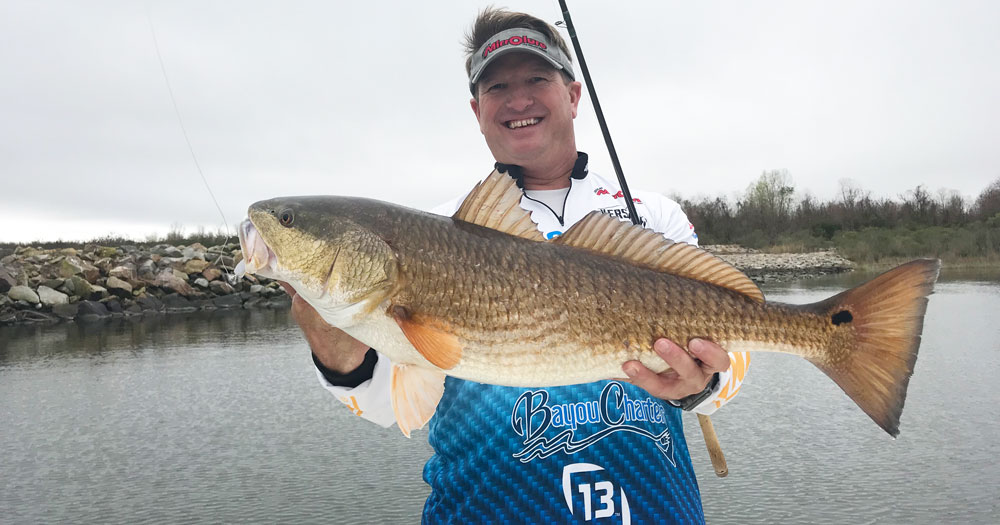
Thomason prefers a shrimp creole Matrix Shad in clearer water, and any bait with a chartreuse tail if the water is stained. Under the cork, he opts for a quarter-ounce jighead
“I don’t think color makes that much of a difference in dirty water,” he said. “Just work the mouths of the drains, where it pours into the channel from Lake Borgne.”
Summing things up, Thomason said the MRGO just makes sense as a spot to target in March as fish stage up in preparation to move to outside waters to spawn in the coming months.
“It’s one big, gigantic deep area with lot of bait,” he said. “And if a front comes through, they have the ability to drop right down to the bottom. If it warms up a few days and their metabolism revs up, they can swim up and down that ledge feeding until it’s time to move out. They’re not going to move out until they know cold fronts aren’t going to catch them.”
Even better, because the MRGO is protected from the wind, pedal-powered anglers can also get in on the action.
“A kayak fisherman can launch at Campo’s and go right out there and start fishing doing the same thing, trolling right there,” Thomason said. “And they produce a lot of fish doing that.”
Editor’s Note: To contact Capt. Charlie Thomason with Bayou Charters, call 504-278-3474 or visit www.captaincharlie.com.
